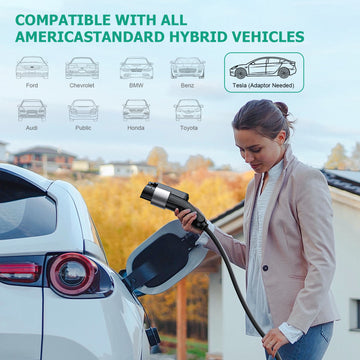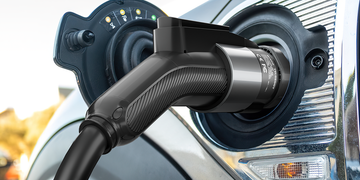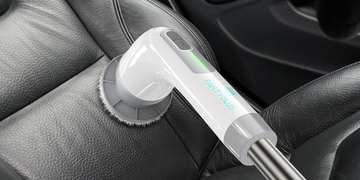As the electric vehicle (EV) revolution continues to gain momentum, understanding the nuances of charging infrastructure becomes essential for both current and prospective EV owners. Among the various charging options available, Level 2 and Level 1 chargers stand out as primary solutions. In this article, we will explore and compare the charging speeds of Level 2 and Level 1 chargers to provide insights into the efficiency and convenience they offer.
Level 2 Charger Charging Speed:
Level 2 chargers are designed to provide faster charging compared to their Level 1 counterparts. These chargers typically operate on a 240-volt power supply, allowing them to deliver a higher power output to the electric vehicle. The charging speed of a Level 2 charger is notably quicker, making it a preferred choice for many EV owners, especially those seeking efficient charging solutions for daily use.
Charging times with a Level 2 charger vary depending on the electric vehicle's battery capacity and the charger's power output. On average, a Level 2 charger can add approximately 10 to 60 miles of range per hour of charging, offering a practical and time-saving option for individuals with higher daily commuting needs.
Level 1 Charger Charging Speed:
Level 1 chargers, on the other hand, utilize a standard 120-volt household outlet. While these chargers are widely accessible and convenient, they come with a trade-off in charging speed. Level 1 chargers provide a slower charging rate compared to Level 2 chargers, making them suitable for overnight charging or situations where extended charging times are acceptable.
Charging times with a Level 1 charger can vary significantly. On average, a Level 1 charger may add about 2 to 5 miles of range per hour of charging. This makes Level 1 chargers suitable for scenarios where time is not a limiting factor, such as overnight charging at home.
Comparative Analysis:
The key distinction between Level 2 and Level 1 chargers lies in their charging speeds. Level 2 chargers offer a faster and more efficient charging experience, making them ideal for daily use and providing a solution for users with higher energy demands. On the other hand, Level 1 chargers are convenient for slower, overnight charging, making them suitable for situations where time is less critical.
In the evolving landscape of electric mobility, understanding the charging speeds of Level 2 and Level 1 chargers is crucial for making informed decisions as an EV owner. While Level 2 chargers excel in providing faster charging for daily use, Level 1 chargers offer accessibility and convenience, particularly in locations where high-power charging infrastructure may be limited. Ultimately, the choice between Level 2 and Level 1 charging depends on individual needs, daily routines, and the specific requirements of the electric vehicle owner.

Which is better, Level 2 charger or Level 1 charger?
As electric vehicles (EVs) become increasingly prevalent, the choice between charging solutions becomes a pivotal decision for owners. Level 2 and Level 1 chargers each have their strengths and applications, but which is better for your specific needs? In this article, we'll compare the two charging options, considering factors such as charging speed, convenience, and practicality.
Charging Speed:
One of the primary differentiators between Level 2 and Level 1 chargers is the charging speed. Level 2 chargers operate on a 240-volt power supply, providing a significantly faster charging rate compared to Level 1 chargers, which use a standard 120-volt household outlet. If speed is a top priority for your charging needs, a Level 2 charger may be the preferable choice.
For daily commuting and frequent use, the faster charging times offered by Level 2 chargers can be a game-changer. These chargers typically add approximately 10 to 60 miles of range per hour, making them suitable for individuals with higher energy demands.
Convenience:
Level 1 chargers, utilizing standard household outlets, are highly convenient and widely accessible. However, their slower charging speed might not be suitable for those with more demanding schedules. Level 1 chargers are particularly useful for overnight charging at home, providing a convenient solution for individuals who don't rely heavily on their vehicle throughout the day.
On the other hand, Level 2 chargers are versatile and offer a balance between speed and convenience. They are suitable for both home installations and public charging stations, providing a faster charge without compromising accessibility.
Practicality for Daily Use:
When considering which charger is better for daily use, it ultimately depends on your lifestyle and driving patterns. If you have a shorter daily commute and can afford to charge your vehicle overnight, a Level 1 charger may be practical and cost-effective.
However, for those with longer commutes or a need for faster turnaround times between trips, a Level 2 charger provides the practicality and efficiency required for daily electric vehicle use.
Environmental Impact:
Both Level 1 and Level 2 chargers contribute to the environmental benefits of electric vehicles by reducing reliance on traditional fossil fuels. Choosing between the two may also involve considering the sustainability aspect of your charging habits.
In the Level 2 vs. Level 1 charger debate, there isn't a one-size-fits-all answer. The better choice depends on your specific needs and usage patterns. If speed and efficiency are paramount, a Level 2 charger may be the right fit. If convenience and occasional charging suit your lifestyle, a Level 1 charger might be more practical.
Ultimately, the decision should align with your individual preferences, driving habits, and the availability of charging infrastructure in your area. Whether you opt for the speed of Level 2 or the convenience of Level 1, the transition to electric mobility signifies a positive step towards a sustainable and cleaner future.





